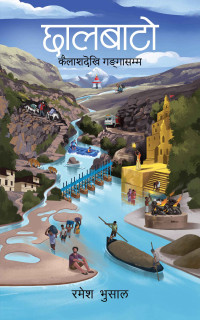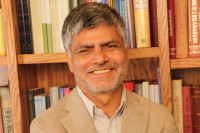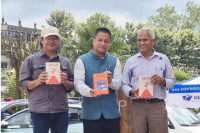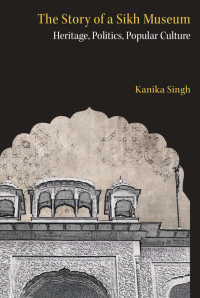Books
Bridging geographical boundaries with literature
Khem K Aryal talks about his recently published book, ‘The In-Betweeners’, and writing about the South Asian experience in the US.
Manushree Mahat
Khem K Aryal loves writing stories. He enjoys delving into the intricate web of the human psyche to create characters that give life to his human stories. His recently published collection of short stories, ‘The In-Betweeners’ dives into the lives and experiences of Nepalis living in the United States—their muddled, unsatisfied and questioning sense of mind playing an integral theme to the stories.
Aryal is an associate professor of creative writing at Arkansas State University and also serves as the creative material editor of Arkansas Review. Recently, he has edited an anthology of short stories and essays by South Asian American writers, titled ‘South to South: Writing South Asia in the American South’, co-edited the poetry collection ‘Kavya: Representative Nepali Poetry in English’, and has written a number of short stories and essays.
In this interview with the Post’s Manushree Mahat, he talks about his recently published book, ‘The In-Betweeners’, writing about the South Asian experience in the US and his passion as an editor.
How did your reading journey begin?
When I was growing up, reading wasn’t really considered the sensible hobby that it is now. It wasn't until I was doing my intermediate studies that I found myself amidst so many books at once in the college library. There, I began reading Nepali literary books, and literary magazines like ‘Garima’. I was an English major during my bachelor’s, when I started reading English Literature more and more. One author who shaped my early reading days is Ernest Hemingway.
At what point did you begin writing?
I started writing in Nepali first. I’ve written a collection of ghazals and Nepali short stories that have marked the beginning of my writing journey. It was after I completed my master’s in English that I jump-started my way into writing in English. There is a growing readership of Nepali writers who write in English, but back then, the audience was small. I got involved with the Society of Nepali Writers in English (NWEN), where I found a community with other writers who had similar interests in English writing.
In your recently published short story collection ‘The In-betweeners’, family dynamics is a major theme explored. Was that intentional?
I didn’t specifically plan to focus on families in my stories, but my intention was to uncover and narrate the untold stories of Nepali families residing in the United States. However, I view these narratives as addressing more than just family matters. The characters in my stories are primarily individuals, each with concealed dreams and aspirations that are distinctly their own. While their families shape a significant part of their identity, I also aimed to delve into their individual selves.
The second story in the collection has a different narrative style. The narrator uses ‘you’ to recount the events in the story. Is there a reason for that?
Yes, firstly, I find the second person point of view interesting, and it was my way of experimenting with my prose. Some authors have employed this style in intriguing ways in their works. Caleb Nelson in his literary fiction piece ‘Open Water’ and Caroline Kepnes in ‘You’ come to mind at the moment.
Regarding why I chose this point of view for ‘Lost Country’, it’s because I was struggling with that one. That story includes some real events. As authors, it can be challenging to distance oneself from personal experiences and translate them into a story. I used that narrative approach to create a separation between myself and the character I was writing about.
How did you write the stories? Which was the most challenging to write?
I wrote all these stories in the span of four to five months. I felt a strong inclination to write stories about these Nepalis, so I organised the stories accordingly. It begins with ‘Laxman Sir in America’ and concludes with ‘How Not to Come to America’. Laxman Sir establishes the tone for the subsequent stories, and the final story brings life to all the preceding ones.
The second story, ‘Lost Country’, and the subsequent one, ‘Mrs Sharma’s Halloween’, were pretty challenging. When writing a character, a deep understanding of their motivations and feelings is essential. Mrs Sharma, an elderly Nepali woman, grapples with the reality of living in a country distant not only in geography but also culturally. I dedicated considerable time to grasp her psyche, the profound loneliness she felt, and her approach to adapting to a new culture. Developing this character took a lot of time, making it my most challenging story to write.
You also worked on ‘South to South’, a collection of stories and essays by South Asian writers living in the US. How is working as an editor different from writing your own stories?
Editing has been my passion for the longest time. The opportunity to edit ‘South to South’ exposed me to a number of incredible South Asian American authors and their stories. I was handling someone else’s work and tidying up their craft in some cases. It was like I was a part of all their stories, and being able to share their stories was incredible and absolutely fun.
How has the reception of Nepali literature been among American audiences?
This is quite tricky because it is very hard to instil interest in the American audience and problems within the publishing industry have a lot to do with that as well. Many publishing houses just take in one South Asian author, and that fills their diversity criteria. I’ve heard literary agents say, “We already represent one South Asian author; we don’t need another one.” So, getting published in the first place is very challenging.
Moreover, Nepal is not widely known in the US, so encouraging them to read and learn stories of people from our country is difficult. Despite these challenges, many South Asian American authors are doing very well, working towards sharing their stories and getting their work published. It’s a growing industry, and as authors, we are doing our best to promote our work.
Khem K Aryal’s book recommendations
The Sympathizer
Author: Viet Thanh Nguyen
Year: 2015
Publisher: Grove Press
‘The Sympathizer’ is the winner of the 2016 Pulitzer Prize for Fiction, and deservedly so. The book explores the life of a spy during the Vietnam War.
The Goldfinch
Author: Donna Tartt
Year: 2013
Publisher: Little, Brown and Company
‘The Goldfinch’ is a classic and another Pulitzer Prize winner. The book delves into themes of loss and identity through the perspective of a boy.
White Teeth
Author: Zadie Smith
Year: 2000
Publisher: Hamish Hamilton Salamandra
‘White Teeth’ is the tale of two friends and their lives in the aftermath of the Second World War. It is one of my favourite books of all time.
Shuggie Bain
Author: Douglas Stuart
Year: 2020
Publisher: Grove Press
‘Shuggie Bain’ narrates the story of a young boy living in impoverished conditions with a mother struggling with alcoholism and an absent father.
Educated
Author: Tara Westover
Year: 2018
Publisher: Random House
‘Educated’ is a memoir about a young Westover living with a survivalist family and seeking an education.




 16.24°C Kathmandu
16.24°C Kathmandu











